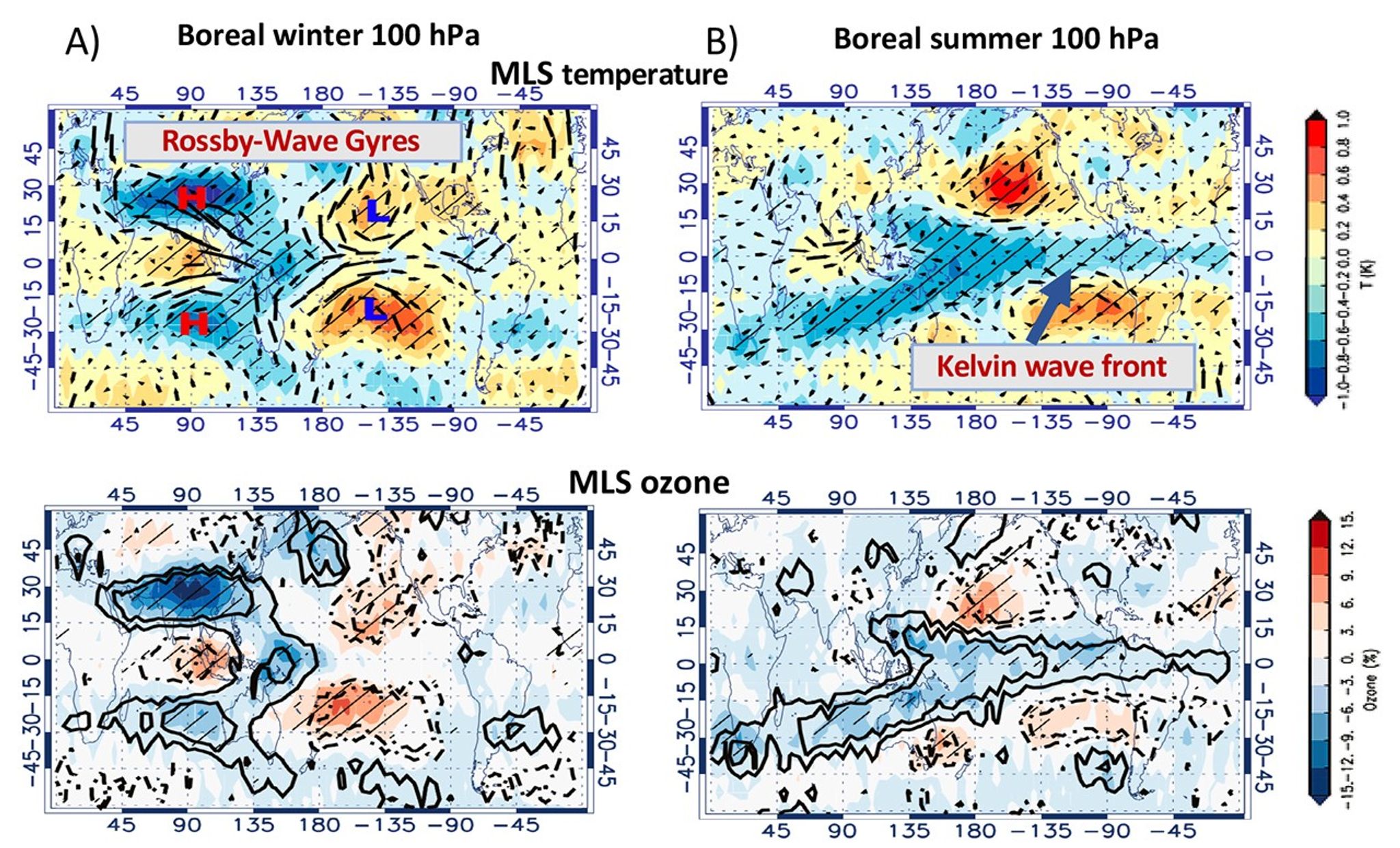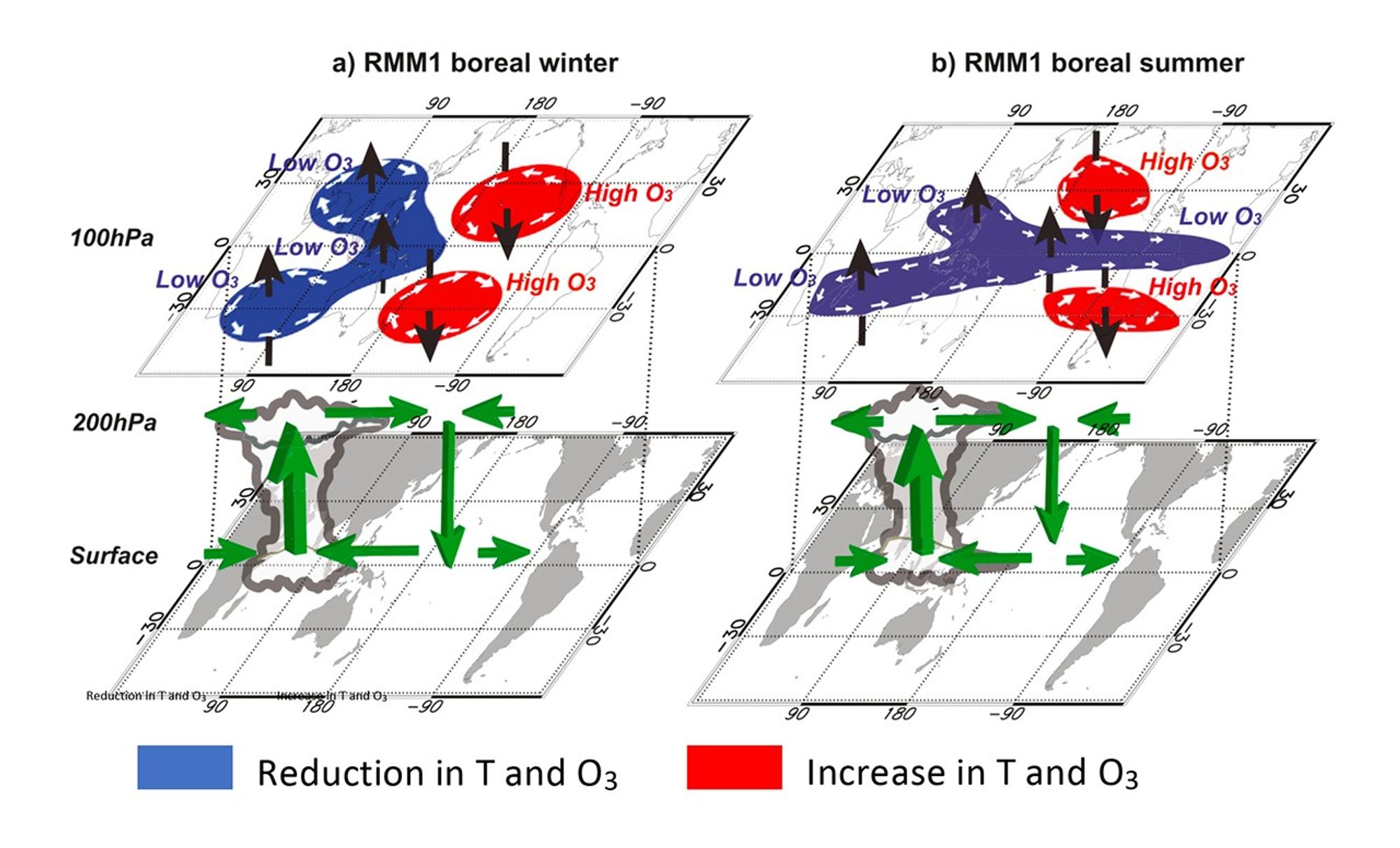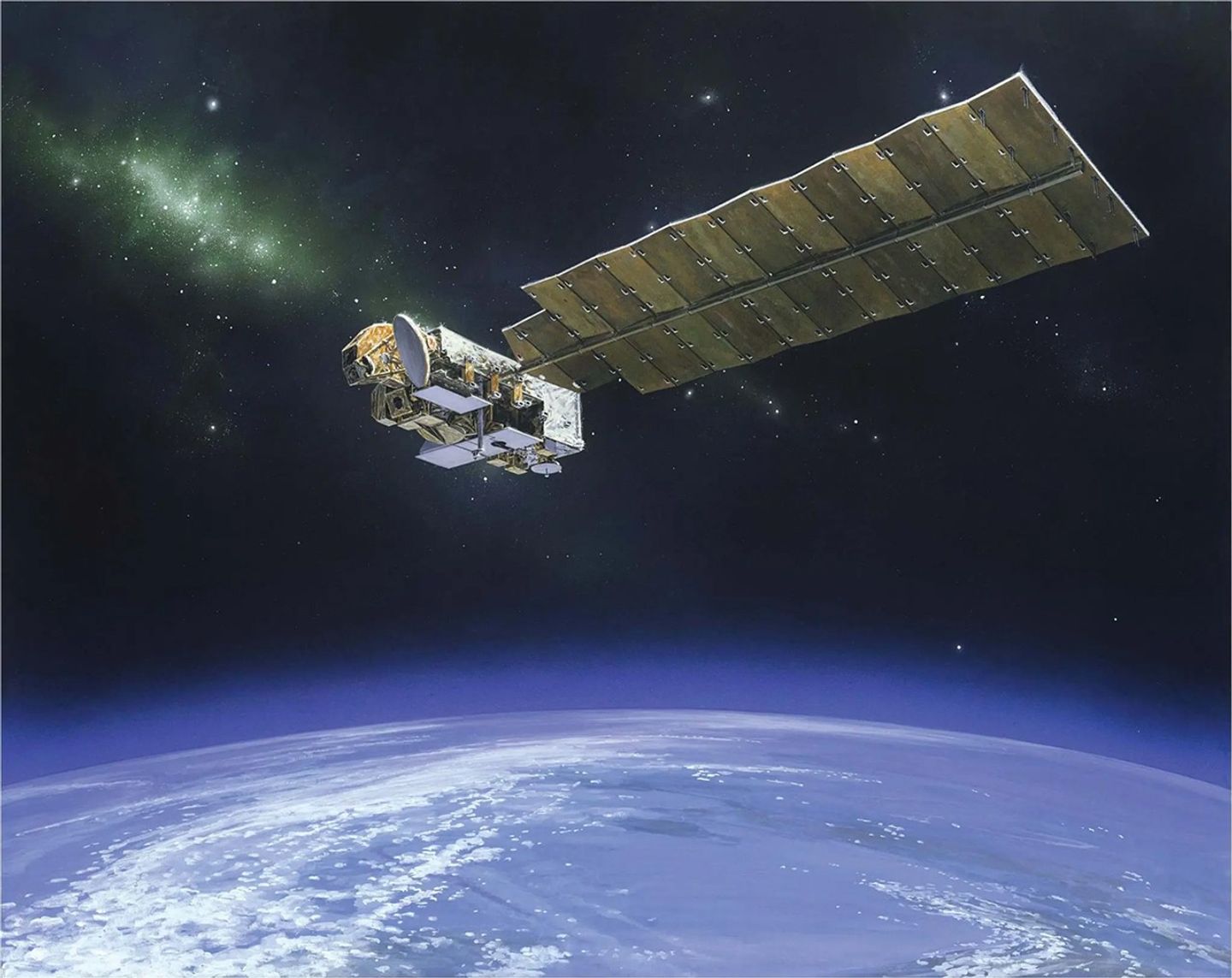Resolving Seasonal Differences in Lower Stratosphere
Scientists are using data to resolve seasonal differences in lower stratospheric temperature, circulation, and composition due to the Madden-Julian Oscillation.
Long-term, high-quality Aura Microwave Limb Sounder (MLS) data enabled research that explains the strong seasonal and regional variations in climatically-important lower stratospheric (LS) trace gases (e.g., 03 and H2O) that are associated with the Madden-Julian Oscillation (MJO) – an eastward moving weather disturbance that traverses the tropics within 30 to 60 days, on average.
This study shows that:
- Well-known planetary-scale perturbations (“Rossby-Wave Gyres”) in the LS temperature (Panel A- top) during boreal winters change to a more zonally uniform tropics-wide cooling (“Kelvin wave front”) during boreal summer (Panel B-top).
- Enhanced tropics-wide upwelling in the regions of lower temperatures leads to reduction of ozone (in blue shade) during boreal summers (Panel B-bottom).
- Seasonal differences due to the MJO result from differences in the zonal structure of Kelvin wave propagation at the equator, which strongly depends on the background zonal winds.



Scientific significance, societal relevance, and relationships to future missions:
The intraseasonal (20–90 day) variability of the tropical upper-troposphere and lower-stratosphere (UTLS) is dominated by the Madden–Julian Oscillation (MJO). The MJO’s impact on UTLS chemical constituents (such as ozone (03), which shields all living organisms from harmful Ultra-Violet (UV) radiation, and water vapor (H2O), which is an important greenhouse gas) extends far beyond the tropics. As summarized in Figure 2, trace gas response is significantly different during boreal winter than summer, and is in agreement with the MJO-induced changes in the temperature and circulation. The analysis of MLS observations presented in this study is useful for evaluation and validation of the MJO-related physical and dynamical processes in models.
For instance, it is highly desirable to examine the ability of a range of models to simulate seasonal differences in the UTLS temperature and circulation due to the MJO. The inability of the CCMs to accurately generate shorter-time-scale variability such as that from the MJO, can potentially lead to the lack of or much weaker variability in tropical and extratropical composition of the UTLS.
A more realistic representation of the spectrum of variability in climate models will provide a better estimate of future projections. Thus, this study emphasizes the crucial need to continue collecting and evaluating high quality satellite measurements to trace the impact of changes in the UTLS circulation.
Data Sources:
Aura MLS version 4.2 Level 2 measurements of temperature (T), ozone (03) and water vapor (H2O) are available from the NASA Goddard Space Flight Center Earth Sciences (GES) Data and Information Services Center (DISC). The MLS data between 250 and 30 hPa are outputted on 12 pressure levels, and the MLS vertical resolution was retained. The MERRA-2 reanalysis of horizontal wind (U and V) fields were obtained from the NASA Earth Observing System Data and Information System (https://earthdata.nasa.gov).
References: Tweedy, O. V., Oman, L. D., & Waugh, D. W. (2020). Seasonality of the MJO impact on upper troposphere/lower stratosphere temperature, circulation and composition. Journal of the Atmospheric Sciences, JAS-D-19-0183.1. https://doi.org/10.1175/JAS-D-19-0183.1
This work was supported by the NASA Postdoctoral Program (NPP) at NASA GSFC
04.2021
MLS
Aura’s Microwave Limb Sounder (MLS) instrument uses microwave emission to measure stratospheric temperature and upper tropospheric constituents. MLS also has unique capability to measure upper tropospheric water vapor in the…
Learn More


























